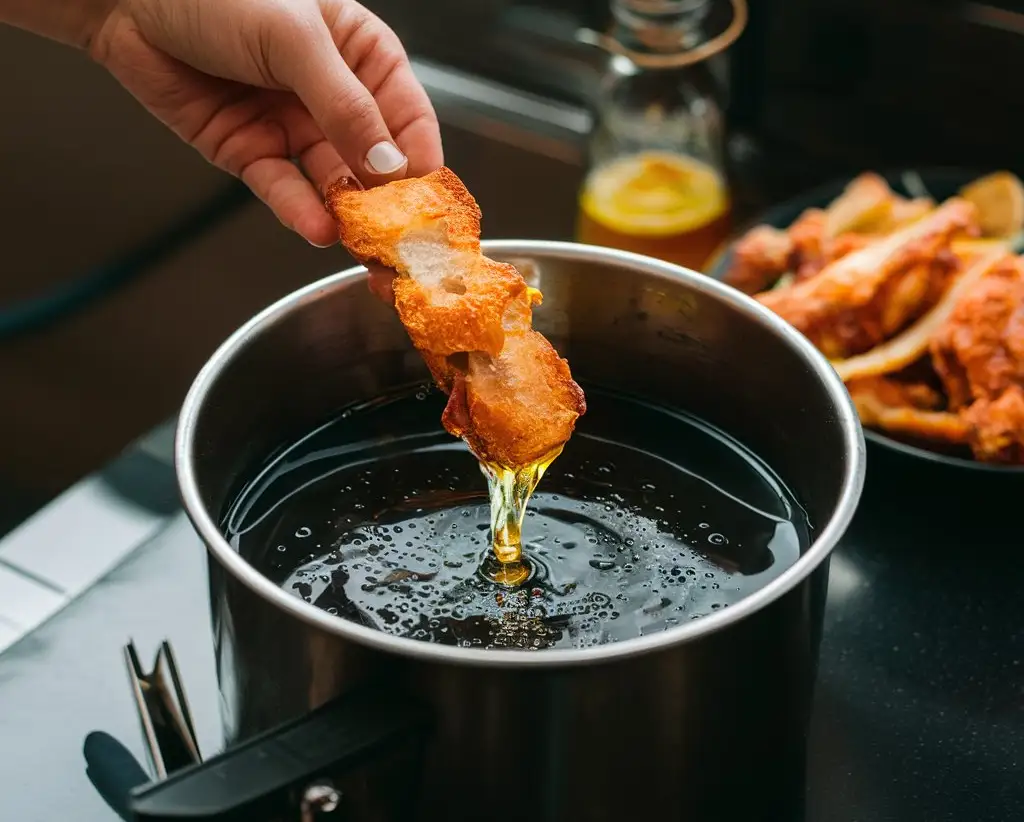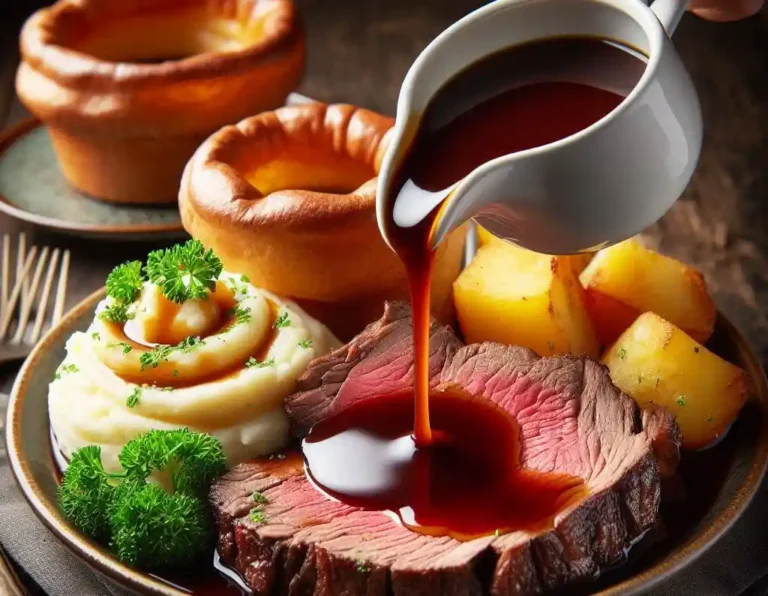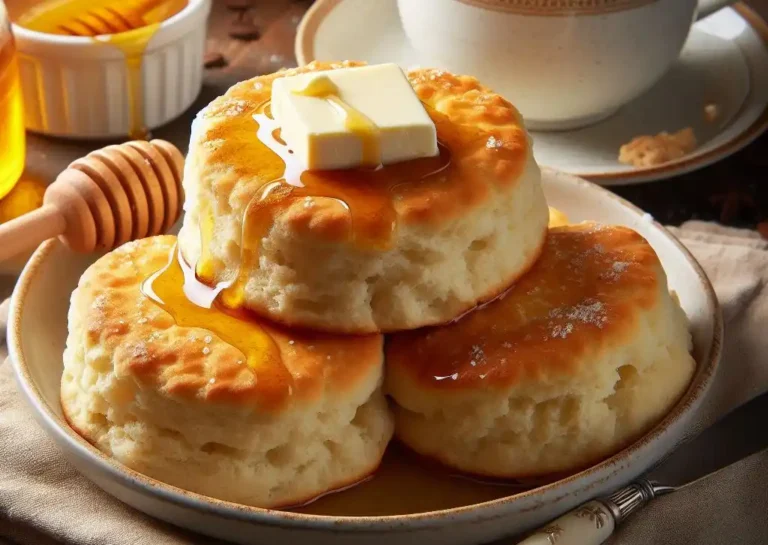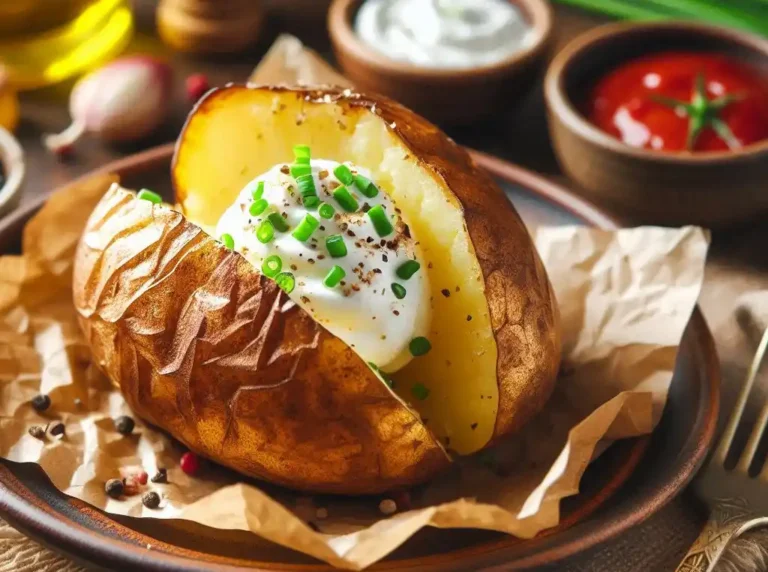How Long Can You Keep Oil in a Deep Fryer: A Comprehensive Guide
In this post, we’ll dive into the world of deep fryer oil, exploring the signs that indicate it’s time for a change, the factors that affect oil longevity, and practical tips for extending its lifespan.
When it comes to deep frying, the quality of the oil is just as important as the food being cooked. Fresh, clean oil can make all the difference in the taste, texture, and overall appeal of your fried delights.
How Long Can You Keep Oil in a Deep Fryer: A Quick Overview
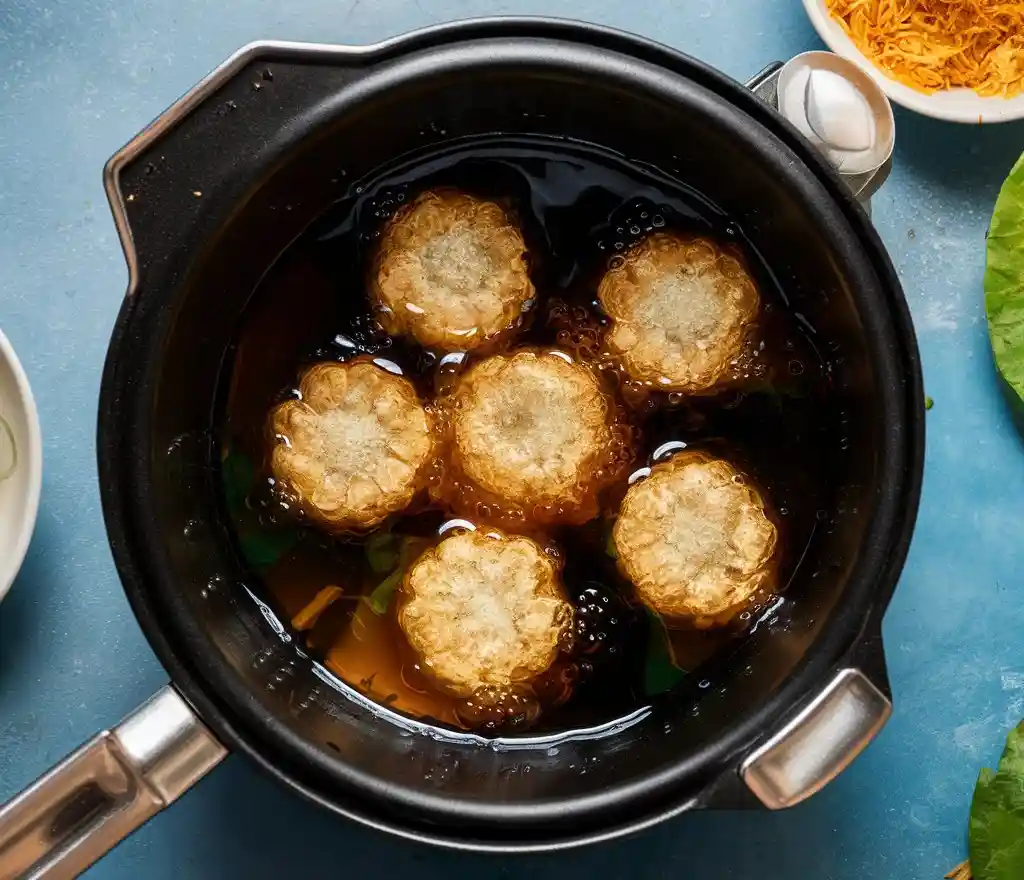
Factors Affecting Oil Lifespan:
- Type of oil used
- Quality of oil
- Frequency of use
- Filtering and maintenance habits
- Storage conditions
General Guidelines:
- Peanut oil: 3-6 months
- Vegetable oil: 2-4 months
- Canola oil: 1-3 months
- Lard: 1-2 months
Signs It’s Time to Change the Oil:
- Oil becomes dark or cloudy
- Oil smells bad or has an off-flavor
- Oil foams excessively
- Food cooked in the oil tastes bad or has an off-flavor
- Oil reaches the “total polar compounds” (TPC) limit (usually around 25%)
Tips for Extending Oil Life:
- Filter oil regularly
- Store oil in a cool, dark place
- Avoid mixing different types of oil
- Don’t overheat oil
- Clean the fryer regularly to prevent contamination
Factors Affecting Oil Lifespan: Temperature, Usage, and Storage
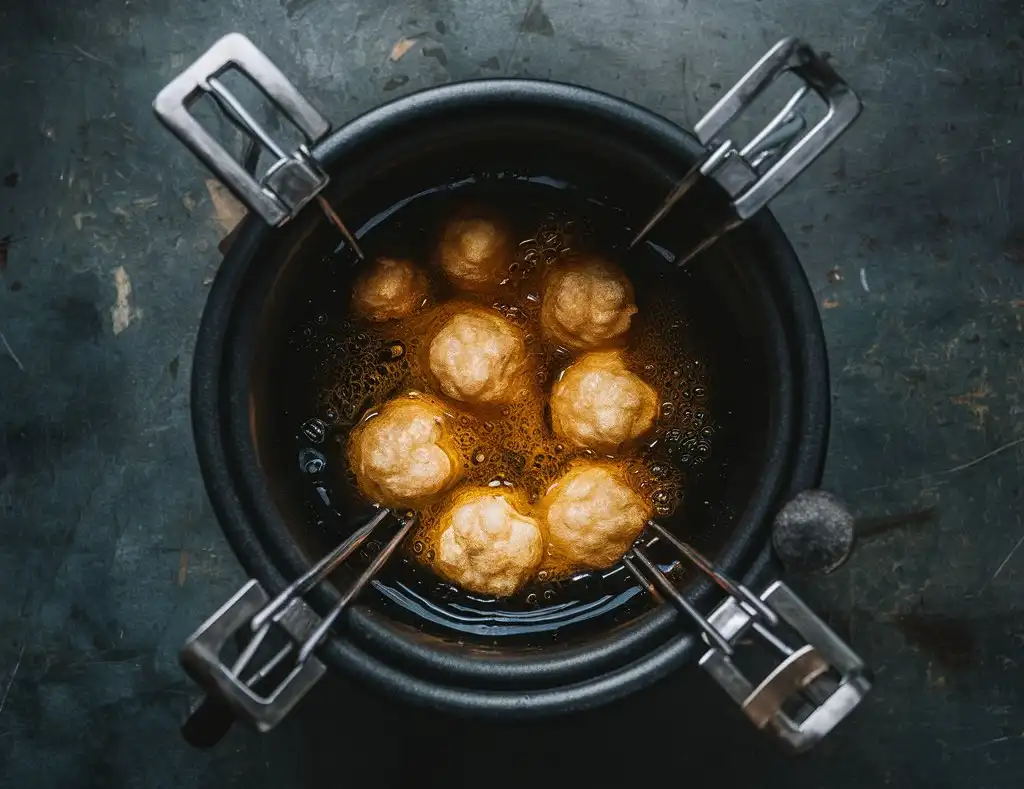
Temperature:
- High temperatures: Oil degrades faster when heated above 350°F (175°C). Prolonged exposure to high temperatures can break down the oil’s molecular structure, leading to the formation of harmful compounds and off-flavors.
- Temperature fluctuations: Frequent temperature changes can cause oil to degrade faster. Try to maintain a consistent temperature between 325°F (165°C) and 375°F (190°C) for optimal oil life.
Usage:
- Frequency of use: The more you use your deep fryer, the faster the oil will degrade. If you use your fryer daily, you may need to change the oil every 1-2 weeks. If you use it less frequently, you may be able to go 4-6 weeks between oil changes.
- Food particles and sediment: Food particles and sediment can contaminate the oil, causing it to degrade faster. Regularly cleaning the fryer and filtering the oil can help minimize this effect.
Storage:
- Cool, dark place: Store the fryer in a cool, dark place to slow down oil degradation. Avoid storing the fryer near heat sources, ovens, or direct sunlight.
- Tight-fitting lid: Ensure the fryer has a tight-fitting lid to prevent air from entering the tank and causing oxidation, which can lead to oil spoilage.
- Avoiding contamination: Keep the fryer and oil storage area clean and free from contaminants, such as dust, dirt, or other substances that can spoil the oil.
Additional Factors:
- Oil type: Different types of oil have varying levels of stability and resistance to degradation. For example, peanut oil is generally more stable than vegetable oil.
- Filtering and maintenance: Regular filtering and maintenance can help extend the life of the oil. Neglecting these tasks can lead to faster oil degradation.
- Moisture: Excess moisture can cause oil to degrade faster. Ensure the fryer and oil storage area are dry and well-ventilated.
The Ideal Oil Change Interval: A Guide to Deep Fryer Maintenance

Factors Influencing Oil Change Interval:
- Type of oil used: Different oils have varying levels of stability and resistance to degradation. For example:
- Peanut oil: 3-6 months
- Vegetable oil: 2-4 months
- Canola oil: 1-3 months
- Lard: 1-2 months
- Frequency of use: The more you use your deep fryer, the faster the oil will degrade. Consider:
- Daily use: 1-2 weeks
- Weekly use: 2-4 weeks
- Occasional use: 4-6 weeks
- Frying habits: Your frying habits can affect oil degradation. Consider:
- Temperature: Higher temperatures can reduce oil lifespan
- Food type: Frying high-moisture foods can reduce oil lifespan
- Filtering habits: Regular filtering can extend oil lifespan
- Storage conditions: Proper storage can help extend oil lifespan. Consider:
- Cool, dark place
- Tight-fitting lid
- Avoiding contamination
Signs It’s Time to Change the Oil:
- Visual inspection: Check the oil for:
- Darkening or cloudiness
- Sediment or particles
- Foam or froth
- Smell and taste: Check for:
- Off-flavors or odors
- Rancid or sour smells
- Performance: Check for:
- Decreased frying performance
- Increased oil consumption
- Food sticking to the fryer basket
Ideal Oil Change Interval:
- General guideline: Change the oil every 2-4 weeks, or as needed based on the factors mentioned above.
- Customized approach: Monitor your oil’s condition and adjust the change interval accordingly. Consider:
- Regular oil testing (e.g., total polar compounds (TPC) analysis)
- Keeping a maintenance log to track oil performance and degradation
Tips for Extending Oil Life:
- Regular filtering: Filter the oil regularly to remove impurities and extend its lifespan.
- Proper storage: Store the oil in a cool, dark place with a tight-fitting lid to prevent contamination and degradation.
- Cleanliness: Maintain a clean fryer and oil storage area to prevent contamination and oil spoilage.
- Oil selection: Choose a high-quality oil that is suitable for deep frying and has a longer lifespan.
Signs It’s Time to Change the Oil: Smell, Color, and Consistency
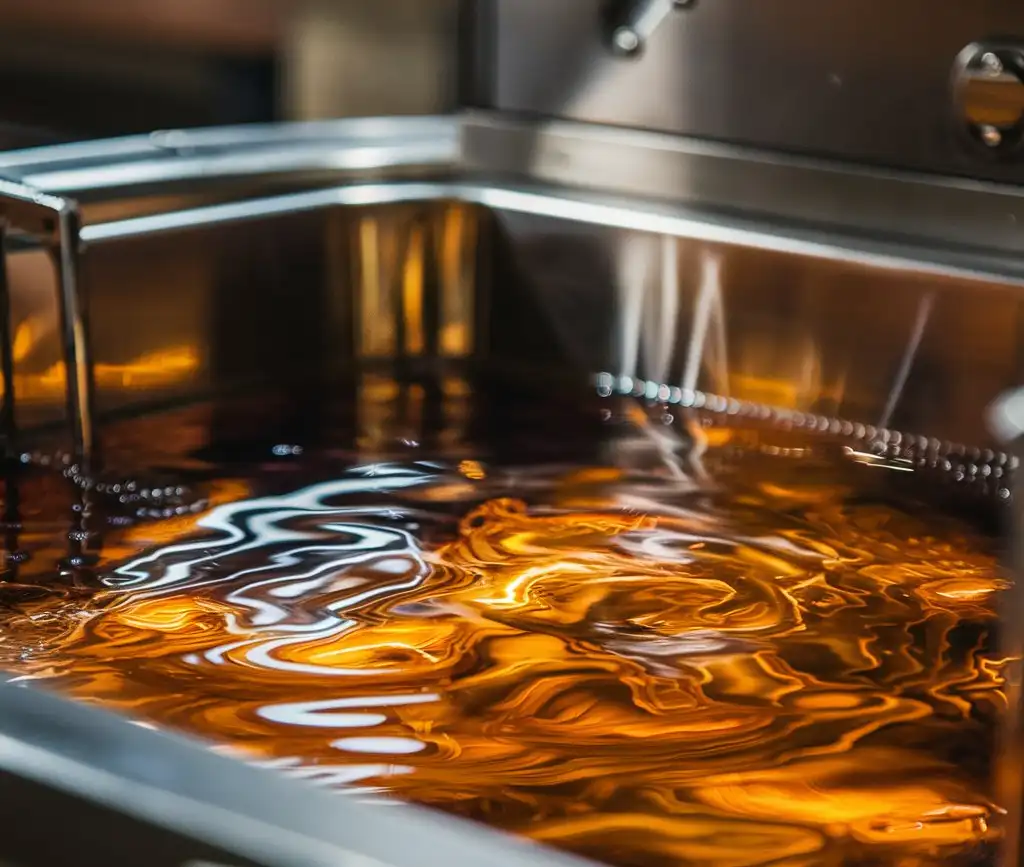
Smell:
- Off-flavors or odors: If the oil smells bad or has an off-flavor, it’s time to change it. This can be a sign of spoilage or contamination.
- Rancid smell: If the oil smells rancid or like old oil, it’s time to change it. This can be a sign of oxidation or spoilage.
- Burning smell: If the oil smells like it’s burning or has a burnt smell, it’s time to change it. This can be a sign of overheating or contamination.
Color:
- Darkening: If the oil has darkened in color, it’s time to change it. This can be a sign of oxidation or spoilage.
- Cloudiness: If the oil is cloudy or has particles in it, it’s time to change it. This can be a sign of contamination or spoilage.
- Murkiness: If the oil is murky or has a cloudy appearance, it’s time to change it. This can be a sign of contamination or spoilage.
Consistency:
- Thickening: If the oil has thickened or become more viscous, it’s time to change it. This can be a sign of oxidation or spoilage.
- Foaming: If the oil is foaming or has a foamy texture, it’s time to change it. This can be a sign of contamination or spoilage.
- Sludge: If the oil has a sludgy or thick consistency, it’s time to change it. This can be a sign of contamination or spoilage.
Other Signs:
- Frequent filtering: If you’re filtering the oil frequently, it may be a sign that it’s time to change it.
- Decreased performance: If the oil is not performing as well as it used to, it may be a sign that it’s time to change it.
- Age: If the oil is old or has been in use for a long time, it may be a sign that it’s time to change it.
The Dangers of Old Oil: How Long-Term Use Affects Food Quality and Safety
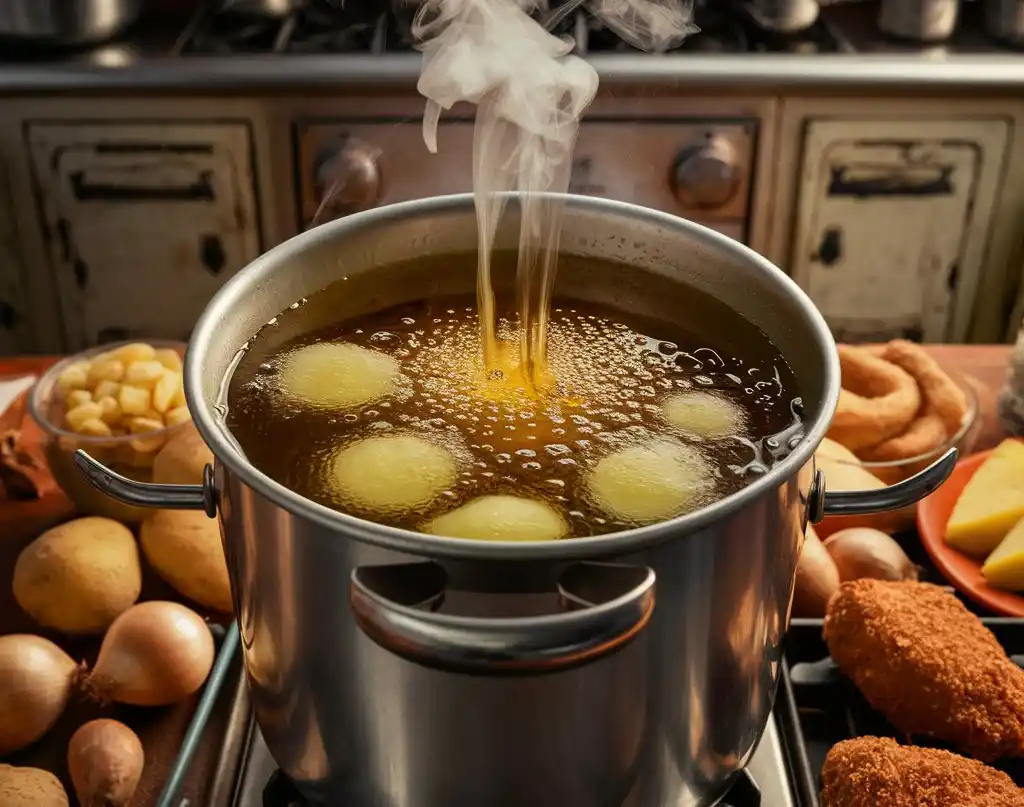
The Risks of Old Oil:
- Food Quality:
- Off-flavors and odors: Old oil can impart unpleasant flavors and aromas to food, affecting its taste and texture.
- Texture and appearance: Food cooked in old oil may appear greasy, soggy, or discolored, affecting its appeal and presentation.
- Food Safety:
- Bacterial growth: Old oil can become a breeding ground for bacteria, which can lead to foodborne illnesses.
- Toxic compounds: Old oil can break down into toxic compounds, such as aldehydes and ketones, which can be harmful if consumed.
- Health Risks:
- Ingesting old oil can lead to:
- Gastrointestinal issues (nausea, vomiting, diarrhea)
- Allergic reactions
- Long-term health problems (cancer, cardiovascular disease)
- Ingesting old oil can lead to:
How Long-Term Use Affects Oil Quality:
- Chemical Breakdown: Long-term use causes oil to break down chemically, leading to the formation of harmful compounds.
- Polymerization: Oil molecules can polymerize, creating large, complex molecules that affect oil quality and safety.
- Oxidation: Oil can oxidize, leading to the formation of off-flavors, off-odors, and toxic compounds.
Signs of Old Oil:
- Visual Inspection:
- Darkening or cloudiness
- Sediment or particles
- Foam or froth
- Smell and Taste:
- Off-flavors or odors
- Rancid or sour smells
- Performance:
- Decreased frying performance
- Increased oil consumption
- Food sticking to the fryer basket
Consequences of Ignoring Old Oil:
- Foodborne Illnesses: Consuming food cooked in old oil can lead to foodborne illnesses, which can be severe and even life-threatening.
- Reputation Damage: Serving low-quality food can damage your reputation and lead to lost customers and revenue.
- Equipment Damage: Using old oil can damage your deep fryer and other equipment, leading to costly repairs or replacements.
Best Practices:
- Regular Oil Changes: Change the oil regularly to prevent degradation and maintain food quality and safety.
- Oil Testing: Regularly test the oil for quality and safety to ensure it meets standards.
- Proper Storage: Store oil properly to prevent contamination and degradation.
- Cleanliness: Maintain a clean fryer and oil storage area to prevent contamination and oil spoilage.
Deep Fryer Oil Types: How Long Do Different Oils Last?
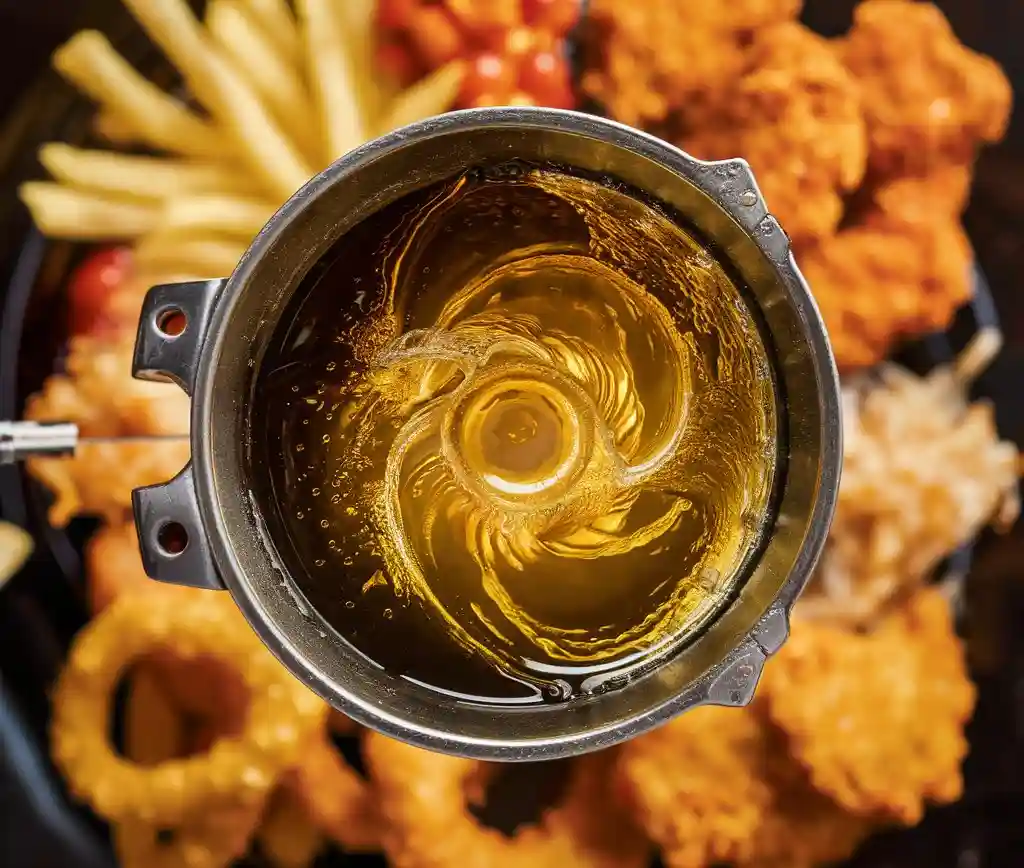
Peanut Oil:
- Lifespan: 3-6 months
- Characteristics:
- High smoke point (450°F/232°C)
- Mild nutty flavor
- Good for frying delicate foods
- Pros:
- Long-lasting
- Versatile
- Good for frying multiple types of food
- Cons:
- Expensive
- Can become bitter if not filtered regularly
Vegetable Oil:
- Lifespan: 2-4 months
- Characteristics:
- Blend of various oils (e.g., soybean, corn, sunflower)
- Neutral flavor
- Good for frying a variety of foods
- Pros:
- Affordable
- Neutral flavor won’t affect food taste
- Good for frying large quantities
- Cons:
- May not be suitable for high-heat frying
- Can become rancid if not stored properly
Canola Oil:
- Lifespan: 1-3 months
- Characteristics:
- Light, neutral flavor
- Good for frying delicate foods
- High smoke point (468°F/242°C)
- Pros:
- Affordable
- Good for frying at high temperatures
- Neutral flavor won’t affect food taste
- Cons:
- May not be suitable for low-heat frying
- Can become rancid if not stored properly
Lard:
- Lifespan: 1-2 months
- Characteristics:
- Rich, savory flavor
- Good for frying traditional or cultural dishes
- High smoke point (375°F/190°C)
- Pros:
- Unique flavor
- Good for frying at high temperatures
- Can add depth to food flavor
- Cons:
- Expensive
- May not be suitable for frying delicate foods
- Can become rancid if not stored properly
Coconut Oil:
- Lifespan: 1-2 months
- Characteristics:
- High smoke point (350°F/177°C)
- Mild, coconut flavor
- Good for frying sweet or savory foods
- Pros:
- Good for frying at high temperatures
- Unique flavor
- Can add health benefits to food
- Cons:
- Expensive
- May not be suitable for frying delicate foods
- Can become rancid if not stored properly
Avocado Oil:
- Lifespan: 1-2 months
- Characteristics:
- Mild, buttery flavor
- Good for frying delicate foods
- High smoke point (520°F/271°C)
- Pros:
- Good for frying at high temperatures
- Unique flavor
- Can add health benefits to food
- Cons:
- Expensive
- May not be suitable for frying large quantities
- Can become rancid if not stored properly
Proper Oil Storage and Handling: Tips for Extending Oil Lifespan
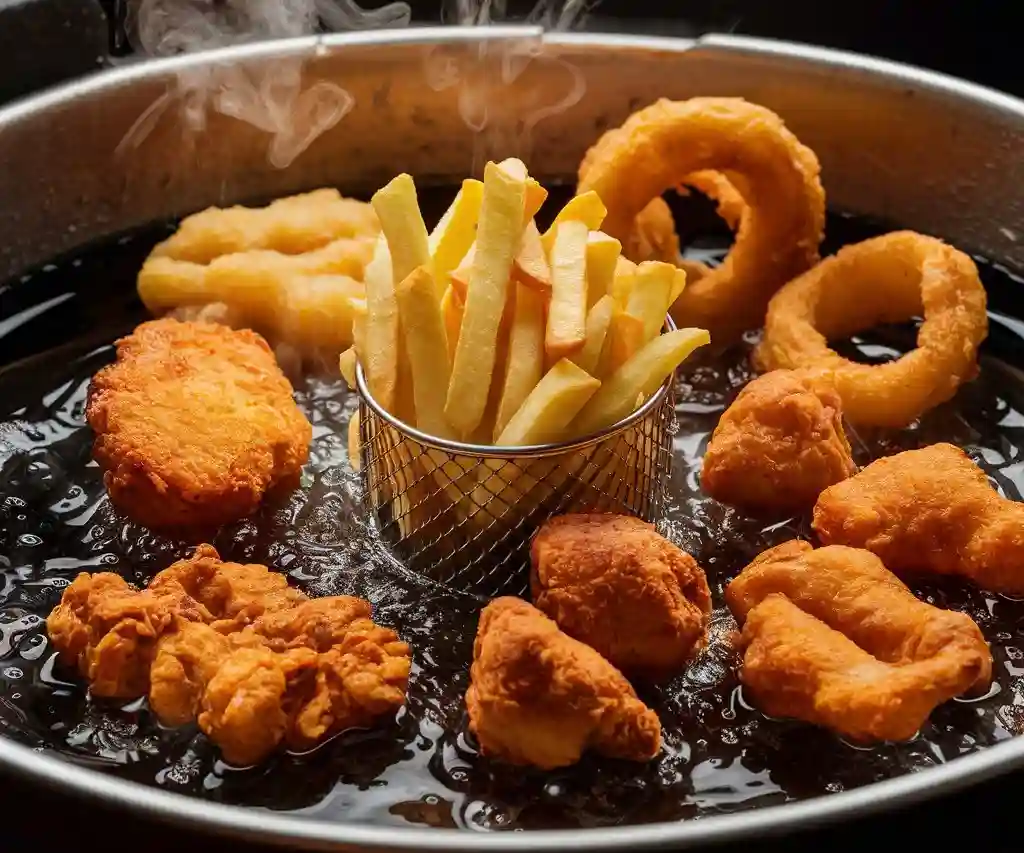
Proper Storage:
- Cool, dark place: Store the oil in a cool, dark place to prevent degradation from heat and light.
- Tight-fitting lid: Use a tight-fitting lid to prevent contamination and oxidation.
- Clean containers: Use clean, dry containers to prevent contamination and spoilage.
- Label and date: Label and date the containers to ensure you use the oldest oil first.
Handling:
- Minimize agitation: Minimize agitation when handling the oil to prevent oxidation and spoilage.
- Use a clean scoop: Use a clean scoop or utensil to handle the oil to prevent contamination.
- Avoid cross-contamination: Avoid cross-contaminating the oil with other substances or flavors.
Filtering and Maintenance:
- Regular filtering: Regularly filter the oil to remove impurities and extend its lifespan.
- Clean the fryer: Clean the fryer and oil storage area regularly to prevent contamination and spoilage.
- Check oil levels: Regularly check the oil levels and top off as needed to prevent overheating and degradation.
Monitoring Oil Quality:
- Regular testing: Regularly test the oil for quality and safety to ensure it meets standards.
- Check for signs of spoilage: Regularly check the oil for signs of spoilage, such as off-flavors, odors, or sediment.
- Keep records: Keep records of oil testing and maintenance to ensure accountability and quality control.
Additional Tips:
- Use the right oil: Use the right oil for the type of food being fried and the desired flavor profile.
- Avoid overheating: Avoid overheating the oil, as this can cause degradation and spoilage.
- Don’t overuse: Don’t overuse the oil, as this can cause it to break down and become rancid.
How to Filter and Clean Deep Fryer Oil for Longer Use
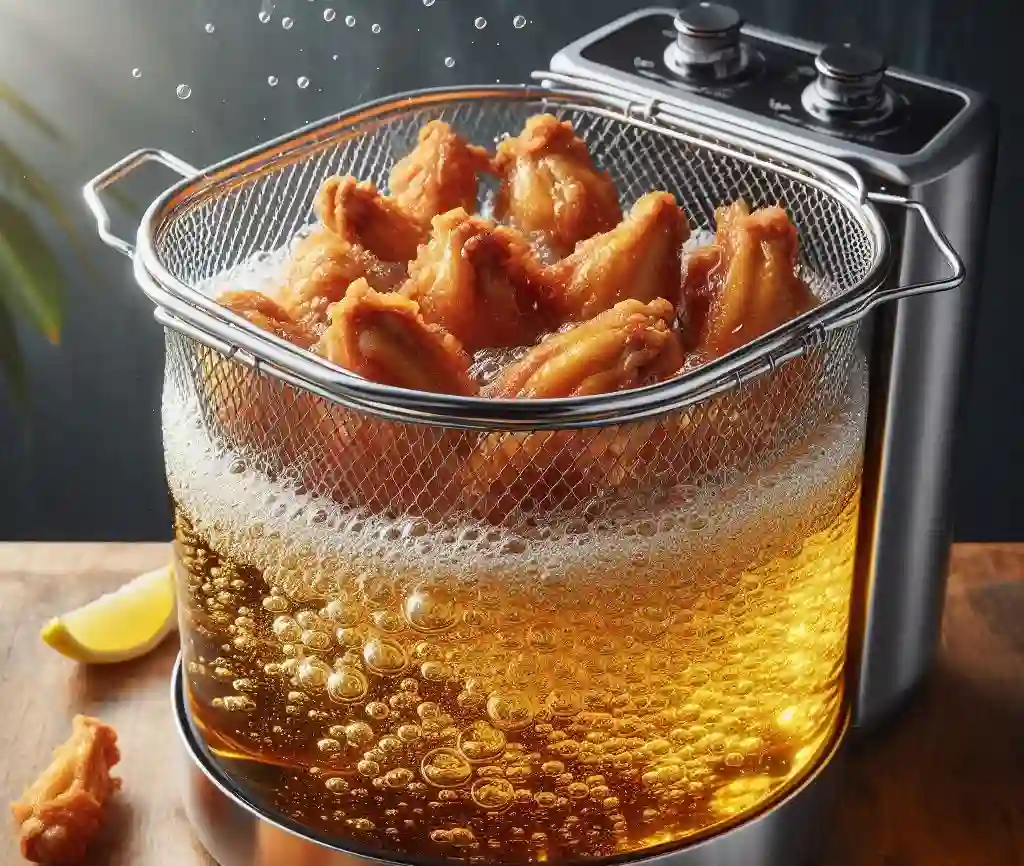
Filtering the Oil:
- Use a filter paper or cloth: Place a filter paper or cloth over a clean container to catch any impurities.
- Pour the oil: Carefully pour the used oil into the filter paper or cloth.
- Let it drain: Allow the oil to drain completely, making sure to catch any impurities in the filter paper or cloth.
Cleaning the Fryer:
- Turn off the fryer: Make sure the fryer is turned off and cool before cleaning.
- Remove food residue: Scrape out any food residue from the fryer basket and pot.
- Wash with soap and water: Wash the fryer basket and pot with soap and warm water to remove any remaining food residue.
- Rinse and dry: Rinse the fryer basket and pot thoroughly and dry with a clean towel.
Cleaning the Oil:
- Skim off impurities: Use a spoon or skimmer to remove any impurities that have risen to the surface of the oil.
- Add a cleaning agent: Add a cleaning agent, such as a degreaser or oil cleaner, to the oil and stir well.
- Let it sit: Allow the cleaning agent to sit for a few hours or overnight to allow it to break down any impurities.
- Filter again: Filter the oil again using a filter paper or cloth to remove any remaining impurities.
Tips and Precautions:
- Use a clean filter: Make sure to use a clean filter paper or cloth to prevent re-contaminating the oil.
- Avoid mixing oils: Avoid mixing different types of oil, as this can affect the quality and performance of the oil.
- Store oil properly: Store the cleaned oil in a cool, dark place to prevent degradation.
- Check oil quality: Regularly check the oil quality and perform maintenance tasks, such as filtering and cleaning, to ensure the oil remains in good condition.
Oil Disposal and Recycling: Responsible Practices for Deep Fryer Owners
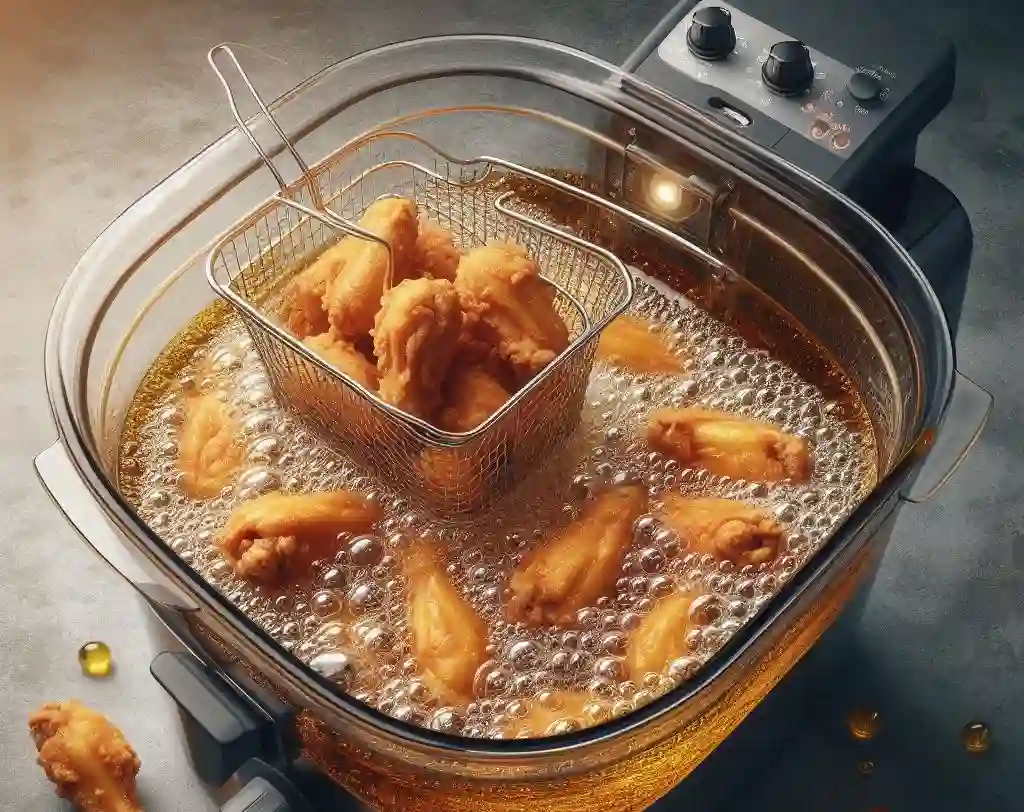
Oil Disposal:
- Check local regulations: Check with your local government for regulations on disposing of used cooking oil.
- Do not pour down drains: Do not pour used cooking oil down drains or toilets, as it can clog pipes and cause environmental harm.
- Take to a recycling center: Take the used cooking oil to a recycling center or a facility that accepts used cooking oil.
- Participate in community collections: Participate in community collections or events that collect used cooking oil for recycling.
Oil Recycling:
- Check with local recycling centers: Check with local recycling centers to see if they accept used cooking oil for recycling.
- Use a oil recycling bin: Use a oil recycling bin or container specifically designed for collecting used cooking oil.
- Participate in oil recycling programs: Participate in oil recycling programs offered by restaurants, schools, or other organizations.
- Convert used oil into biodiesel: Consider converting used cooking oil into biodiesel, a renewable energy source.
Benefits of Oil Recycling:
- Conserves natural resources: Recycling used cooking oil conserves natural resources and reduces the need for new oil production.
- Reduces waste: Recycling used cooking oil reduces waste and minimizes the environmental impact of oil disposal.
- Creates jobs: The oil recycling industry creates jobs and stimulates local economies.
- Produces renewable energy: Recycling used cooking oil can produce biodiesel, a renewable energy source.
Tips for Responsible Oil Disposal and Recycling:
- Store used oil properly: Store used cooking oil in a leak-proof container with a tight-fitting lid to prevent spills and contamination.
- Label containers: Label containers with the contents and date to ensure proper disposal and recycling.
- Keep records: Keep records of oil disposal and recycling to track progress and identify areas for improvement.
- Educate others: Educate friends, family, and community members about the importance of responsible oil disposal and recycling.
FAQs
Q: How often should I change the oil in my deep fryer?
A: The frequency of oil changes depends on various factors, including usage, storage, and maintenance. As a general rule, change the oil every 3-6 months or when you notice a significant decrease in quality.
Q: What are the signs that it’s time to change the oil?
A: Look out for changes in oil color, smell, and consistency. If the oil becomes dark, murky, or develops an off smell, it’s likely time for a change.
Q: Can I reuse deep fryer oil?
A: Yes, but with caution. Reusing oil can lead to a decrease in quality and affect the taste of your food. Make sure to filter and clean the oil regularly to extend its lifespan.
Q: How do I store deep fryer oil properly?
A: Store the oil in a cool, dark place, away from direct sunlight and heat sources. Use airtight containers and label them with the date to ensure you use the oldest oil first.
Q: Can I mix different types of oil in my deep fryer?
A: It’s not recommended to mix different types of oil, as they have varying smoke points and flavor profiles. Stick to one type of oil to ensure consistent results.
Q: How do I dispose of used deep fryer oil?
A: Check with your local authorities for guidelines on disposing of used cooking oil. Many communities have designated facilities for recycling used oil.
Q: Can I use deep fryer oil for other cooking purposes?
A: While it’s technically possible, it’s not recommended to use deep fryer oil for other cooking methods, as it may affect the flavor and quality of your dishes.

Amelia Winthrop is the creative force behind Skillful Cooking, a blog that serves as a canvas for her culinary creations. With a philosophy that cooking should be accessible and enjoyable, Amelia crafts recipes that blend simplicity with sophistication. Her intuitive approach to the kitchen encourages others to embrace the joy of cooking and the pleasure of sharing meals with loved ones.

